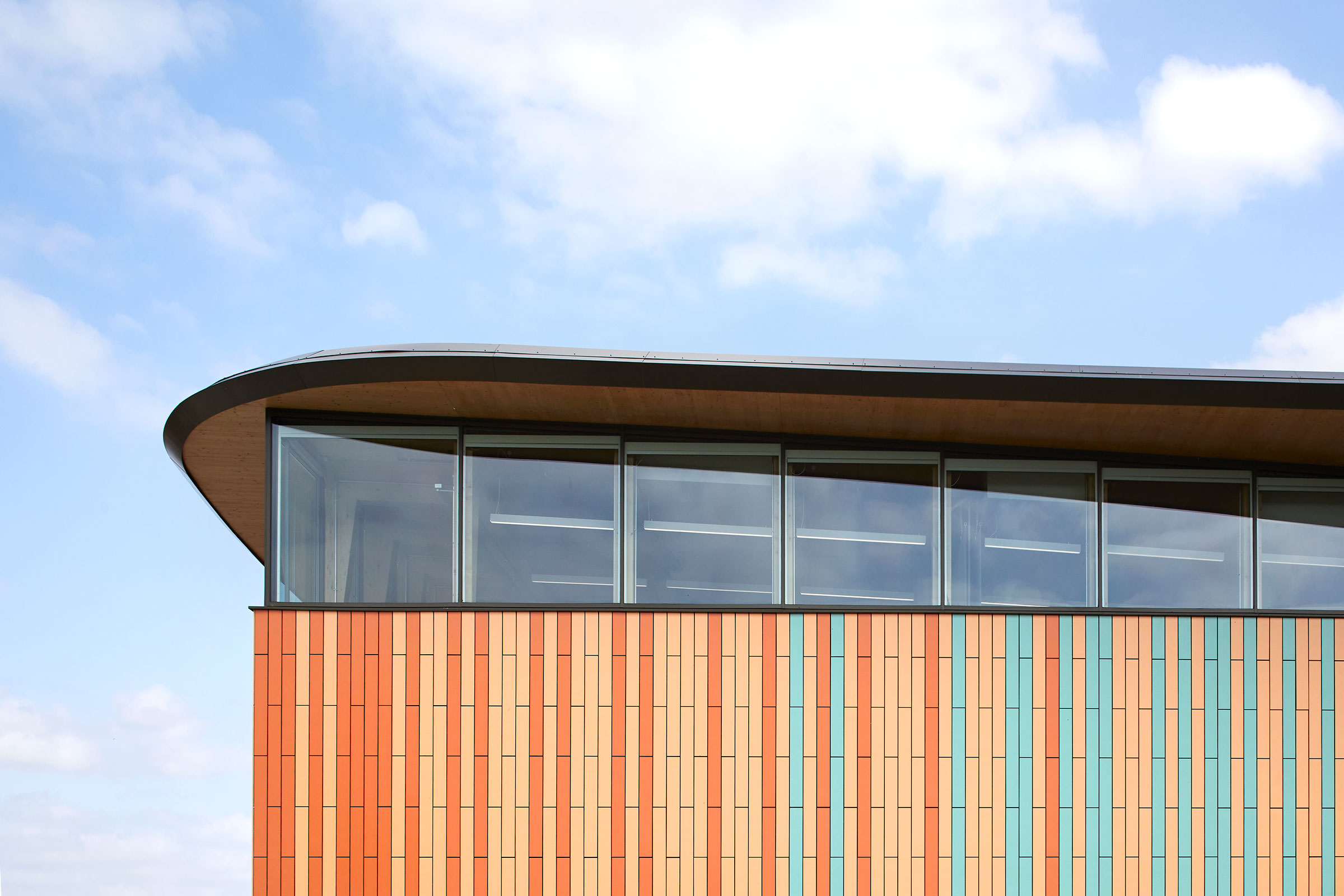Story at a glance:
- Natural ventilation refers to the process by which fresh air is used to ventilate a building, without the aid of fans or other mechanical devices that serve to actively draw air indoors.
- A natural ventilation system may be wind or buoyancy driven and be simple, high-tech, or a hybrid between passive and mechanical ventilation.
- When implemented correctly natural ventilation can increase energy efficiency, improve indoor air quality, and improve occupant health.
For as long as humans have lived in built structures ventilation—or the removal and replacement of bad air with good air—has required a solution. Throughout most of human history this quandary has been solved using strategically placed windows and openings to allow air to flow through a building or heat up, rise, and escape through vents—both of which fall into the category of natural ventilation.
Over the last century most buildings have switched to mechanical systems that rely on fans and heaters for ventilation, though natural ventilation has seen a resurgence in popularity alongside the rise of the sustainable architecture movement.
Let’s explore what natural ventilation is, how it works, and the types of systems available, as well as the benefits and potential challenges associated with natural ventilation.
What is Natural Ventilation?

Low-carbon concrete, high-quality windows, and natural ventilation save energy at the Munch Museum in Oslo. The building is connected to a district-heating system and a seawater cooling plant and features an energy control system that optimizes energy consumption. Photo by Einar Aslaksen
Also known as passive ventilation, natural ventilation refers to the continuous cycle of pulling air into an indoor space from outside, circulating said air, and then removing that air without the aid of mechanical devices (namely fans) or systems. Using one of two natural processes—wind or thermal buoyancy—passive ventilation helps facilitate the movement of air through a building by way of natural vacuums and volumetric pressure differences.
Natural Ventilation Design Considerations
When it comes to designing for natural ventilation, there are a few key factors and elements to keep in mind:
- Site location and orientation. Buildings incorporating wind-driven ventilation should be oriented so the windward wall is positioned perpendicular to the prevailing summer wind.
- Window size and shape. The size and shape of windows plays a large role in determining the rate of ventilation.
- Air inlets and outlets. Buildings that make use of buoyancy-driven ventilation should feature low-positioned air inlets and high-positioned air outlets on the ceiling and/or opposite-facing wall.
- External wind blocks and breaks. The rate of ventilation may be negatively impacted by the presence of external factors (e.g. trees, hedges, other buildings, etc.) that prevent wind from entering or positively impacted by strategically placed wind-catchers.
- Building layout and dimensions. Wind-driven natural ventilation is most effective when implemented in structures that aren’t extremely wide and feature an open floor-plan; these characteristics help air easily flow through a building unobstructed.
Benefits of Natural Ventilation
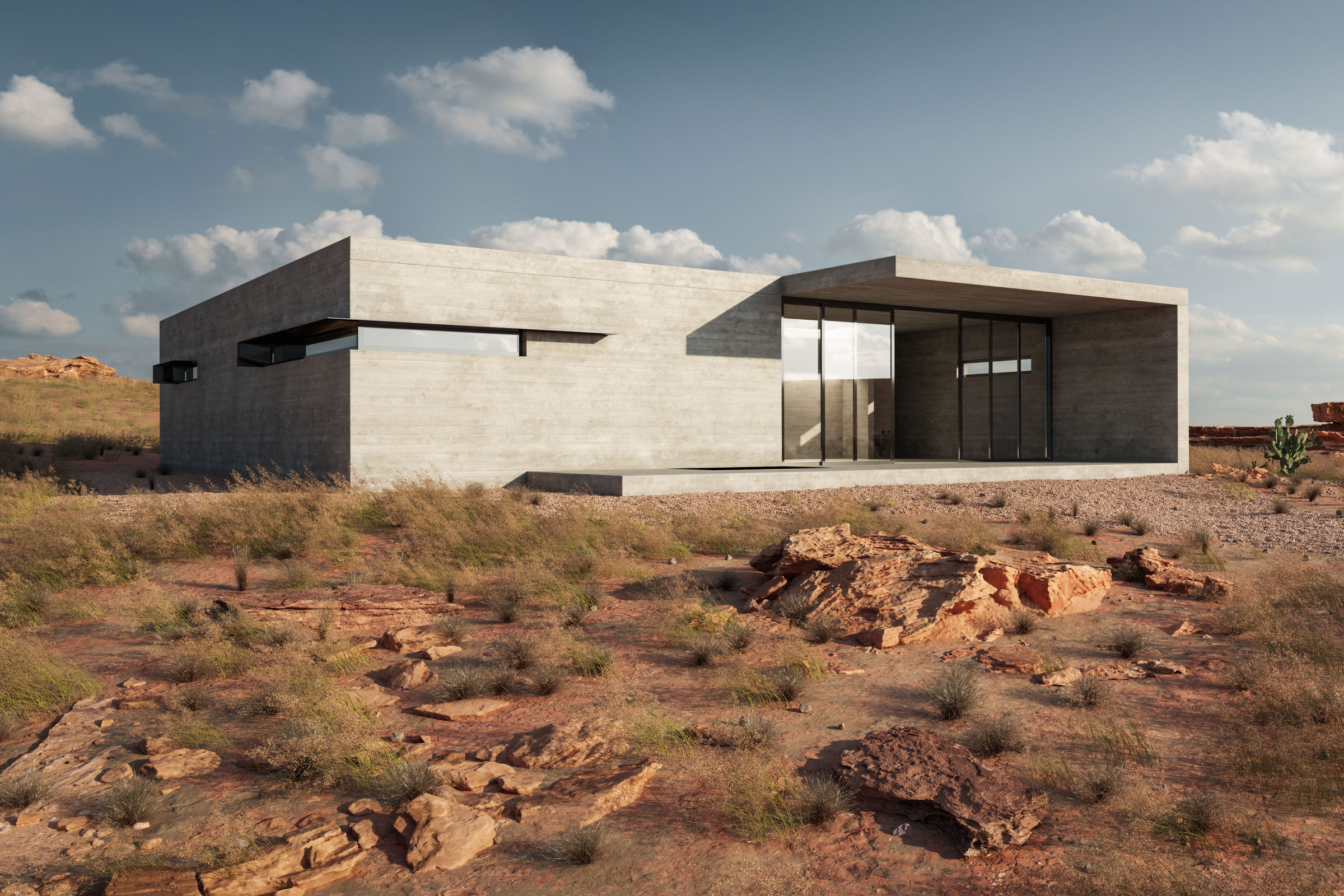
Sharp House was designed to be as economical as possible in construction, with exposed cast-in-place concrete and large glass exposures to the north and south to allow for solar gain and cross ventilation. Photo courtesy of Marc Thorpe Design
The timeless benefits of natural ventilation are largely to thank for its resurgence in popularity.
Increased Ventilation Rate & Improved Occupant Health
Depending on the system and types of windows/openings used, natural ventilation can result in a higher ventilation rate compared to most mechanical ventilation systems, which in turn facilitates higher quality air circulation and a reduced transmission of airborne pathogens and contaminants.
Much like exposure to natural daylighting—something passive ventilation also improves through its reliance on windows as air inlets—natural airflow also helps keep occupants healthier, more alert, and more productive.
Low Maintenance
Most natural ventilation systems require much less maintenance than conventional mechanical ventilation systems, many of which require costly, routine maintenance procedures every few years. That’s not to say natural ventilation systems are entirely without maintenance needs, but any maintenance, repairs, or replacements they do need generally cost less.
Natural ventilation systems typically have a longer lifespan than mechanical systems, most of which require reconditioning or full replacement after every 10 to 15 years.
Energy Efficiency & Reduced Operating Costs
Because natural ventilation reduces a building’s reliance on mechanized cooling systems and equipment, buildings that use passive ventilation strategies typically enjoy improved energy efficiency and lower operating costs compared to those relying solely on mechanical ventilation.
On average natural ventilation helps reduce annual air conditioning energy consumption by anywhere from 10 to 30%, depending on the climate and the building itself.
Challenges With Natural Ventilation
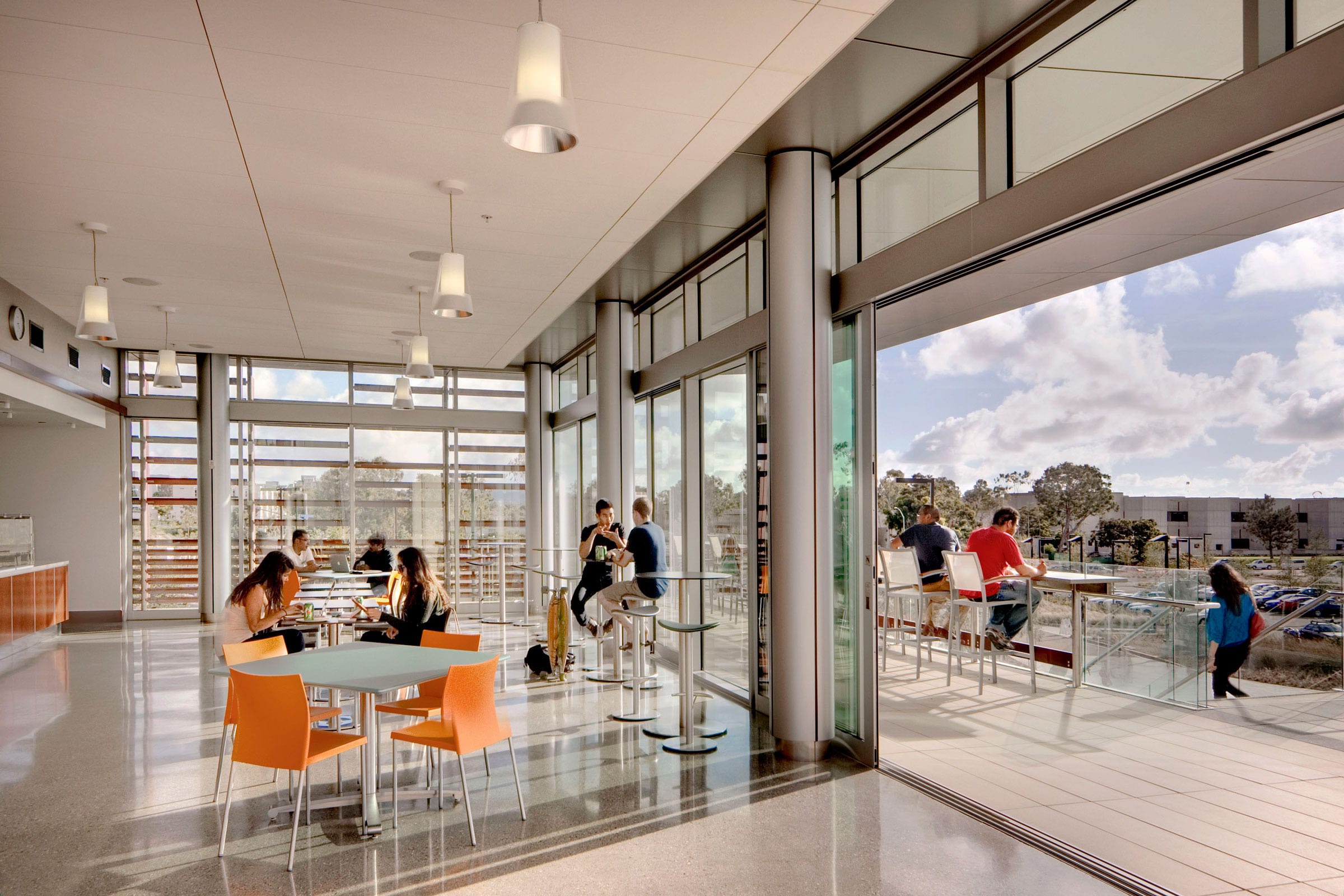
The cafe at the Sanford Consortium for Regenerative Medicine features sliding glass walls, allowing users to take advantage of ocean breezes while shading devices work in concert with ventilation and chilled beams to enhance energy efficiency. Photo by Steve Keating
There are also a number of challenges associated with natural ventilation systems that can reduce their viability and effectiveness.
Not Suitable for All Climates
Natural ventilation—particularly wind-driven ventilation—is largely dependent on certain environmental factors and therefore is not suitable for all climates. Extremely humid areas, for example, aren’t particularly suitable for natural ventilation as these systems are largely ineffective at removing moisture from the air (something mechanical ventilation systems excel at).
Similarly natural ventilation systems may not be desirable in areas that already suffer from high concentrations of airborne pollutants or in regions that experience extreme pollen events throughout the year.
Extremely Variable
Because of their reliance on temperature and wind—two ever-changing environmental conditions—natural ventilation systems can be extremely variable, making them difficult to control. Depending on the circumstances, natural ventilation can result in uncomfortably strong airflow in certain areas or rooms while remaining largely stagnant in others.
Susceptible to Noise Pollution
Natural ventilation systems also allow for a greater transmission of outdoor noise into a building’s interior this particular—a characteristic that might not be a problem in certain areas, but one that is largely unfavorable for buildings in urban areas, especially those that see a lot of traffic or construction.
How Does Natural Ventilation Work?
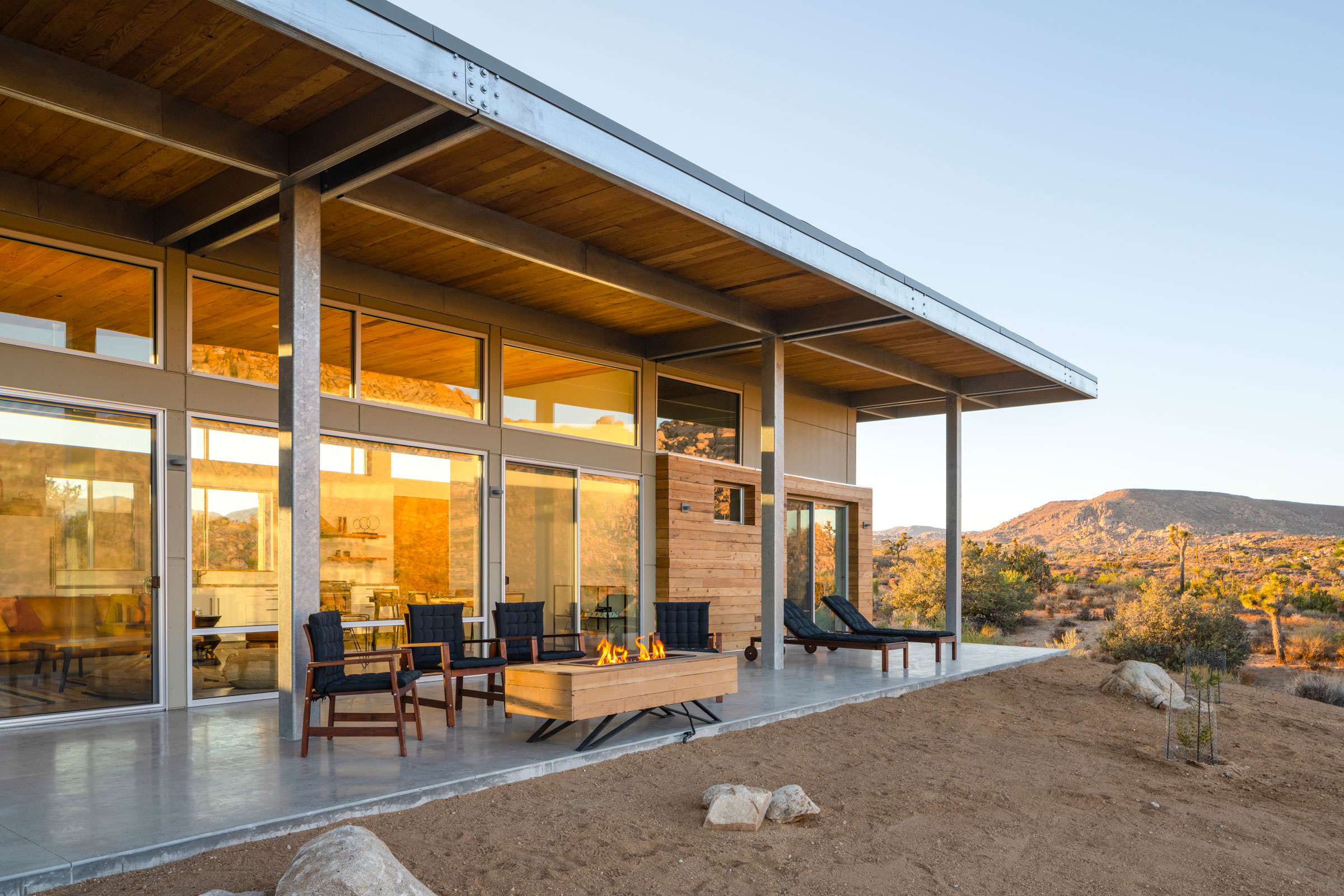
Designed by Jeremy Levine, the Cowboy Modern Desert Eco-Retreat uses passive solar design and wind-driven ventilation to reduce energy needs. Photo courtesy of Lance Gerber.
While there are a few types of natural ventilation strategies that vary in technique, all natural ventilation systems work using one of two factors—wind or buoyancy—and the most effective incorporate both.
Wind-Driven Ventilation
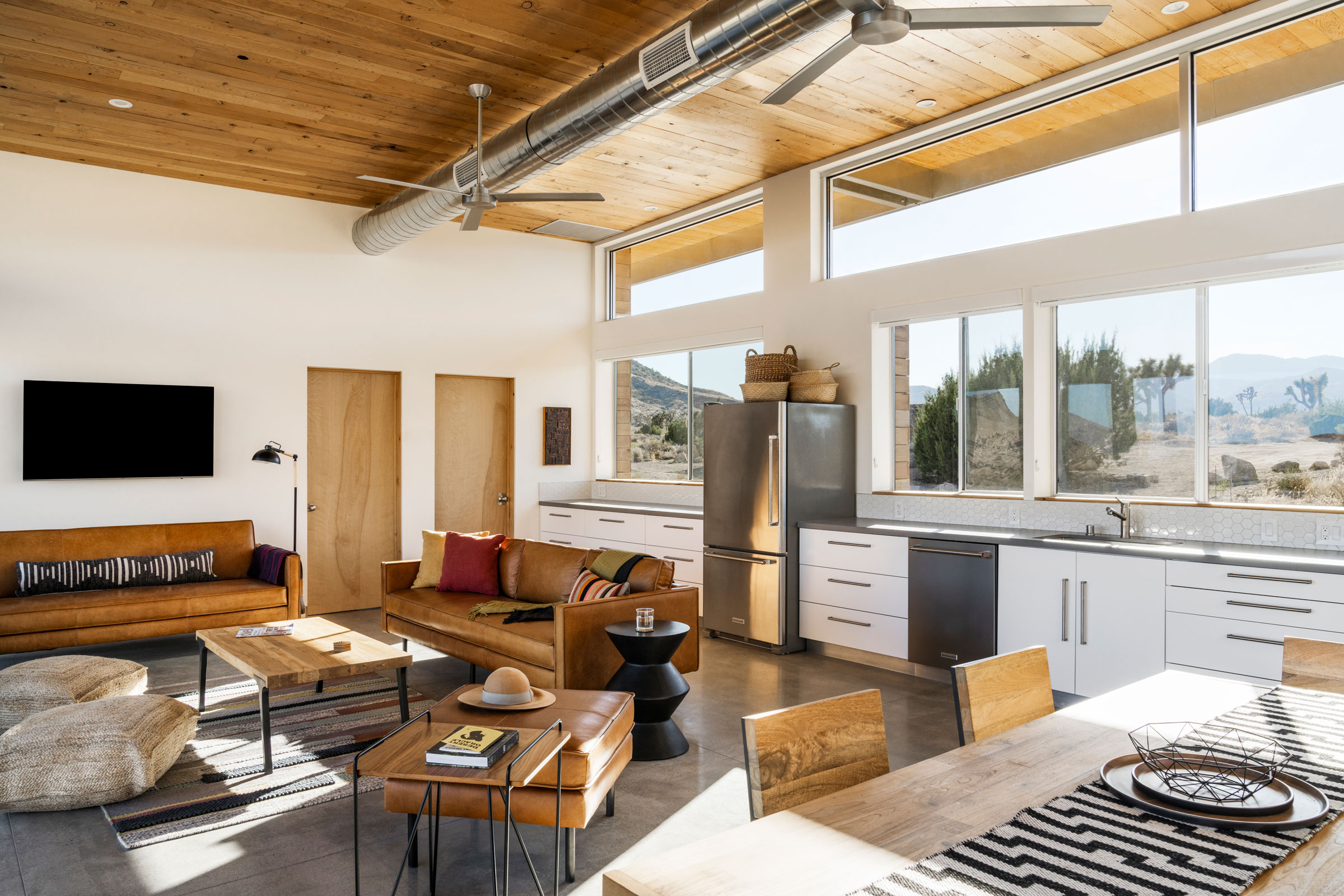
The open floor-plan and large windows of this modern cowboy retreat help facilitate cross ventilation and cooling in the midst of the Californian desert. Photo by Lance Gerber
As the oldest form of natural ventilation, wind-driven ventilation (typically) refers to the process by which air enters a building through windows/openings facing into the wind and, as the result of a natural vacuum, is drawn out through windows on the building’s leeward side or via openings in the roof.
There are two distinct types of wind-driven ventilation: cross and single-sided.
Cross Ventilation
Buildings using cross ventilation are oriented to allow air to enter through an opening (usually a window), flow unobstructed through the interior space, and then exit through an opening on the building’s opposite side.
Cross ventilation works because of the differences in pressure between the windward (high pressure) and leeward (low pressure) sides of a building. Whenever possible the windward wall should be positioned perpendicular to the direction of a region’s prevailing summer winds in order to make the most effective use of cross ventilation.
Single-Sided
A single-sided ventilation system, on the other hand, typically describes a space ventilated by wind entering and exiting through openings positioned on the same side of a building rather than on opposite sides. In order for single-sided ventilation to work properly, the air must be able to escape from a higher point than which it entered.
Most experts agree cross ventilation facilitates better airflow than single-sided ventilation, though single-sided ventilation is still commonly used in apartment complexes where unit size and building layout prevent cross ventilation from being implemented.
Because of the complex parameters influencing the viability of wind-driven ventilation, engineers typically rely on the use of zonal modeling and computational fluid dynamics tools to design effective passive ventilation systems.
Buoyancy-Driven Ventilation
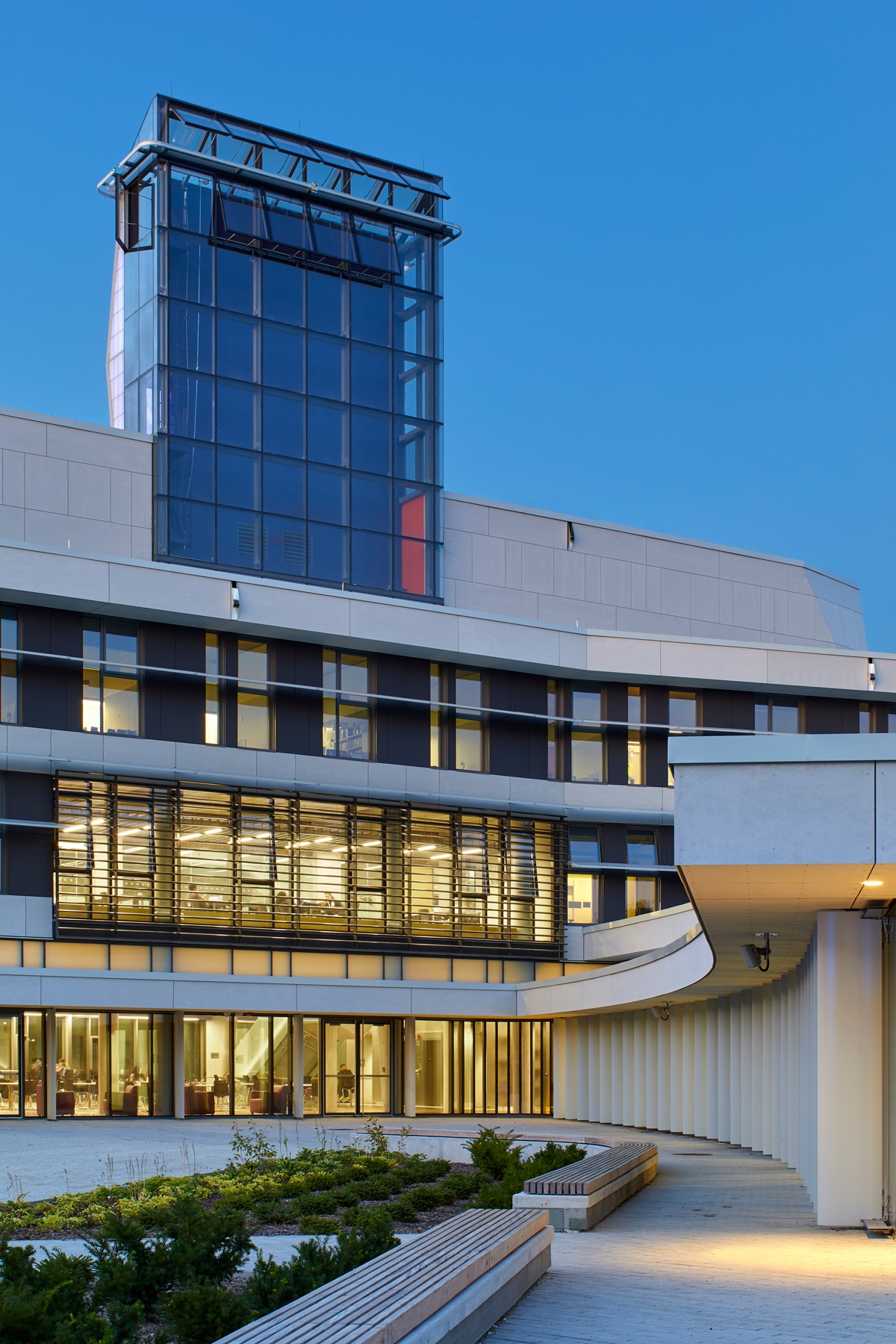
The solar chimney extends nearly seven stories high and induces stack effect ventilation. Photo by Tom Arban
Also known as stack ventilation, buoyancy-driven ventilation takes advantage of the so-called “chimney effect” phenomenon and describes the process by which air circulates as a result of the density differences between air of differing temperatures.
Buildings that implement buoyancy-driven ventilation draw in cool air at the ground-level, after which the air begins to absorb heat and humidity from occupants and objects until it warms, rises, and exits through windows or openings in the roof or on a higher floor. This process creates a partial vacuum that then draws in more cool air through the building’s ground floor windows, continuing the cycle and maintaining air quality.
Because this type of ventilation strategy relies solely on differences in air density rather than active wind, buoyancy-driven ventilation systems are still capable of circulating air even on cool, non-windy days throughout the year. Stack ventilation is not, however, ideal during the hottest summer months, as it would require indoor temperatures to be higher than outdoor temperatures to work effectively.
Types of Natural Ventilation Systems
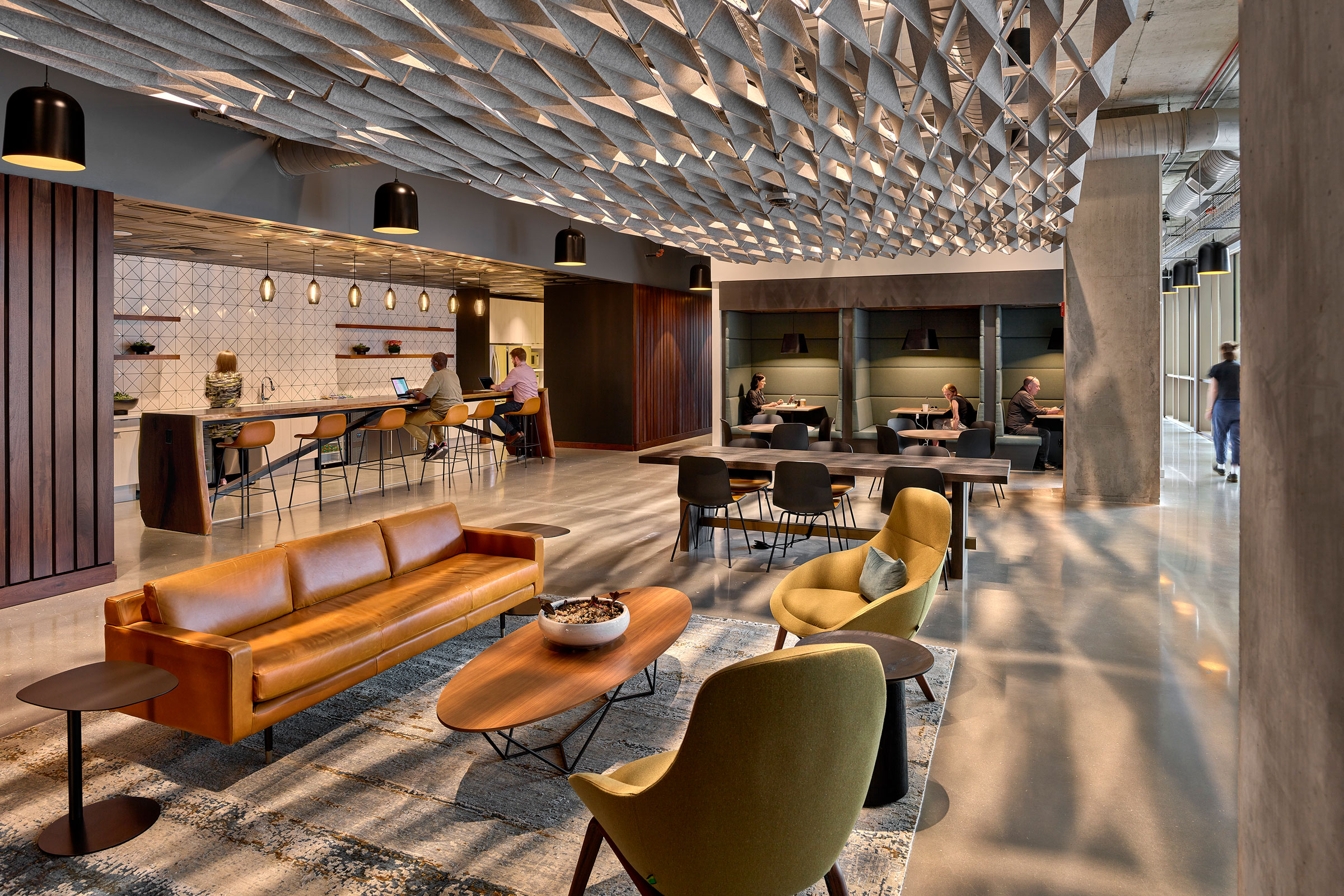
The co-working space was designed to increase the fresh air exchange and provide fine-tuned environmental controls for natural ventilation and daylighting. Photo by Alan Karchmer
Generally there are three distinct types of natural ventilation systems—simple, high-tech, and hybrid—of which may be differentiated by their varying levels of complexity and technological integration.
Simple Natural Ventilation
As the most widespread type of passive ventilation, simple natural ventilation systems are extremely low-tech and must be operated manually—all windows, vents, and other openings must be opened by-hand in order for ventilation to occur. Simple natural ventilation systems are typically found in homes and small commercial buildings with easily-accessible windows.
High-Tech Natural Ventilation
Conversely, high-tech natural ventilation typically incorporates some form of automation or computerized controls that allow for remote, timed, or sensor-controlled operation of windows, vents, and other openings to facilitate optimal ventilation depending on the current indoor/outdoor conditions. High-tech natural ventilation systems are typically implemented in large commercial buildings that possess a large number of windows and/or windows that are difficult to access on a day-to-day basis.
If controlled by a building automation system high-tech natural ventilation setups might use carbon dioxide sensors to automatically open or close windows and restore the indoor air quality to an acceptable level. Despite the use of technology, these types of ventilation systems are still considered natural because they do not use fans or other mechanical devices to actively draw air into the building.
Hybrid Ventilation
While not a true form of natural ventilation, hybrid ventilation systems nevertheless make use of natural ventilation strategies (be they simple or high-tech) alongside additional mechanical ventilation elements, resulting in a highly-efficient multi-modal ventilation system that capitalizes on the benefits of passive ventilation without succumbing to their common faults.
In some cases—like in facilities that use chemicals—hybrid ventilation may be the only viable way for a building to safely ventilate its interior without relying exclusively on mechanical systems.
Hybrid ventilation is also popular within medical facilities, many of which allow natural ventilation in individual patient quarters but rely on powered ventilation systems in their operating rooms and other spaces that require a controlled, sterile environment.

